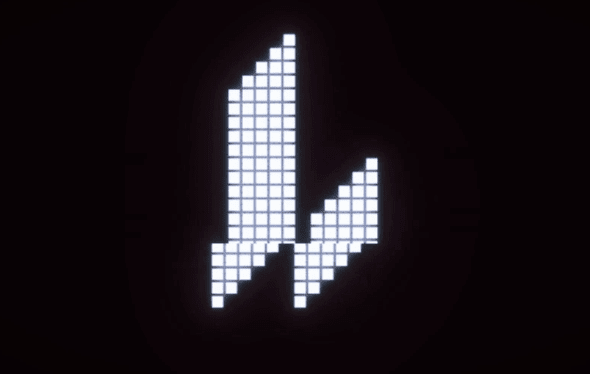
The decentralized perpetual contract trading platform Lighter recently experienced severe service interruptions during a period of high market volatility, coinciding with historic turmoil in the cryptocurrency market, leaving thousands of users unable to trade, which sparked a strong backlash from the community.
Lighter is a new trading platform built on Ethereum Layer 2, known for its zero-knowledge proof (ZK) technology, high-frequency trading capabilities, and low-latency infrastructure. However, the platform team stated that the recent outage was due to an unprecedented surge in trading volume over the past 12 hours, causing unprecedented technical strain. Nevertheless, officials emphasized that user funds remain safe, and there have been no cybersecurity or asset risk incidents.
(USDe flash crash storm: the largest single-day liquidation in history, severely impacting the cryptocurrency market, and Binance experiencing order book failures)
The escalation of the U.S.-China trade war triggered market panic, leading to large-scale liquidations of crypto assets.
This platform interruption is not an isolated incident but occurs against the backdrop of a panic-driven collapse in the entire cryptocurrency market. U.S. President Trump recently announced that starting November 1, 2025, a 100% tariff will be imposed on all Chinese imports, causing market sentiment to collapse instantly.
According to market data, this sudden policy shock triggered up to $19 billion in cryptocurrency contract liquidation events, setting a record for the largest single-day liquidation, affecting about 1.66 million traders. Bitcoin's price once fell below $103,000, and Ethereum plummeted over **15%**, while popular altcoins like Solana and Sui saw declines of over 70%.
In such extreme market conditions, platforms like Lighter are experiencing unprecedented stress tests.
ZK technology can't hold up either? Users worry about being unable to operate their positions.
Lighter's architectural design should inherently possess high scalability, supporting tens of thousands of orders per second for matching and clearing, and its unique ZK circuits are even regarded as a core technology for future trading. However, this interruption has put these technologies to the first extreme market condition "practical test."
Users are expressing dissatisfaction. User @austiinxbt questioned: "What about positions that cannot be closed?" Another user @0itsali0 pointed out: "Our funds are all leveraged at x20, and now we can't set stop-loss or take-profit; how can they say the funds are 'safe'?"
Some posts even question whether the official claim of "no risk" constitutes misleading or potentially fraudulent behavior; after all, in a high-leverage environment, every second could determine the survival of assets.
Community outrage: from memes to missing person notices, the Lighter team has become a target.
As the platform has been unable to return to normal for an extended period, the community began to vent their dissatisfaction through meme images and mocking posts. Classic screenshots of the FTX collapse are circulating again, and a GIF of a strangely expressive dachshund has become an emotional outlet for netizens.
Even the Lighter team cannot escape the storm of criticism; user @acousticxbt posted: "Where is your overly confident founder now?" It's not just a functionality issue; the trust crisis is expanding.
Once a beacon of hope, now a cautionary tale? Lighter's growth and challenges
Just the day before the interruption event (October 10), Lighter was again in the headlines due to an airdrop frenzy and soaring valuations. Its platform token's over-the-counter trading price once broke $100, and the TVL (Total Value Locked) reached $1.18 billion, with weekly perpetual contract trading volume hitting $60 billion, challenging established competitor Hyperliquid.
But this crisis has turned all "growth data" into ironic comparisons. Even with strong technology and market enthusiasm, the platform's stability is the true test in extreme situations.
Choices before the market stabilizes: compensation, migration, or holding on?
On the day (10/11) at 3 PM, the Lighter team stated that repairs were underway, and a compensation plan would be released soon. But for users affected by the losses, "soon" is far from enough.
The outside world is also beginning to pay attention to whether Lighter will launch a compensation mechanism to regain trust. Many traders have already turned to competing platforms like Hyperliquid, seeking a more stable trading environment.
The innovations and risks of DeFi always go hand in hand.
Bankless's Ryan Adams once praised Lighter as a "representative work that combines Ethereum-level security with infinite scalability," but these halos are now facing a reality stress test.
As the global political and economic situation remains highly uncertain, the crypto market may still face similar volatile fluctuations in the future. Lighter's next steps will not only determine its own fate but also serve as a key reference example for ZK technology in high-frequency financial applications.
Currently, the market is waiting for Lighter's follow-up updates, while the DeFi community has once again learned a lesson: innovation is endless, but stability is the key to survival.
This article about Lighter facing a platform interruption crisis, with the star Perp DEX facing challenges, first appeared in Chain News ABMedia.





